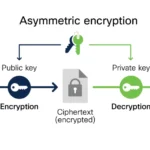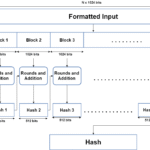In this digital age, cryptography stands as a pillar of modern communication and data security. While its technicalities are often shrouded in sophistication, the applications of cryptography extend far beyond the confines of secure information exchange. Today, we delve into the myriad creative applications of cryptography that permeate our daily lives, promising a profound shift in perspective and igniting curiosity about its ubiquitous presence.
Cryptography, at its core, is the art and science of encoding information to protect it from unauthorized access. This concept, however, is not limited to the realm of computer science; its influence can be observed in various surprising domains. From enhancing personal privacy to fortifying democratic processes, the implications of cryptographic techniques are both expansive and transformative.
Securing Personal Communication
One of the most ubiquitous applications of cryptography is found in personal communication. Messaging applications like Signal and WhatsApp utilize end-to-end encryption, ensuring that only the intended recipients can decipher the content of exchanged messages. This technology not only safeguards sensitive conversations but also cultivates trust among users. The curiosity surrounding who can access our conversations is alleviated as cryptographic methods render eavesdropping nearly impossible.
Moreover, as more individuals recognize the value of privacy, the integration of cryptography into personal communication has become a necessity. Biometric encryption techniques, which involve using unique biological traits like fingerprints or facial recognition, further enhance security. These methods evoke a sense of intrigue; the very essence of one’s identity is converted into a safeguard, further intertwining cryptography with the personal fabric of modern life.
Fortifying Financial Transactions
In the ever-evolving financial landscape, cryptography plays an integral role in enhancing transactional security. Cryptographic algorithms are employed to protect online banking systems and e-commerce platforms, ensuring that financial data remains secure against malicious actors. The increasing occurrence of cyber threats underscores the importance of sophisticated encryption methods.
Consider the advent of cryptocurrencies, which rely on cryptographic principles to secure transactions and control the creation of new units. Blockchain technology, the backbone of cryptocurrencies like Bitcoin, employs a decentralized ledger encrypted through complex algorithms. This incorporation of cryptography into financial systems piques curiosity about the future of money and our relationship with currency.
Pioneering Digital Identity Verification
As digital interactions increase, verifying identity has grown more complex. Cryptography offers innovative solutions, fostering a more secure online environment. Public key infrastructure (PKI) is one such enabling technology, allowing for the validation of digital identities through encryption keys. This technique assures that users are who they claim to be, cultivating a sense of security in online transactions and interactions.
Federated identity management systems, which harness cryptographic principles, further exemplify this shift. By allowing users to maintain a singular digital identity across multiple platforms, these systems reduce the risk of identity theft and ensure that personal data remains protected. The implications of cryptographic identity verification not only influence personal safety but also reshape our understanding of privacy in the digital realm.
Enhancing Collaborative Workspaces
In an increasingly interconnected world, collaboration is essential, but it often comes with challenges around data security. Cryptographic tools facilitate collaboration while maintaining the confidentiality and integrity of shared information. Encrypted file sharing services like Tresorit or SpiderOak leverage cryptography to ensure that collaborative dynamics do not compromise sensitive information.
This application prompts reflection on the paradox of collaboration versus confidentiality. Can we truly work together without exposing our secrets? Cryptography answers with a resounding yes, paralleling the innate desire for communal interaction with the necessity of data protection.
Transforming Voting Systems
In recent years, digital voting systems have gained traction, raising pivotal questions about the security and integrity of democratic processes. Cryptography offers solutions to mitigate potential fraud and ensure transparency in voting. Techniques such as homomorphic encryption allow for votes to be counted while they remain encrypted, preserving privacy while enabling validation.
This application of cryptography not only heightens trust in electoral outcomes but also captivates the imagination regarding the future of democracy. The prospect of securely conducting elections online, while thwarting the threats of tampering or coercion, stimulates discussions about redefining civic engagement in the digital age.
Guarding Personal Data in the Internet of Things (IoT)
The proliferation of IoT devices has rendered households increasingly connected yet potentially vulnerable. From smart thermostats to wearable fitness trackers, each device presents an entry point for data breaches. Cryptography serves as a vigilant guardian, encapsulating personal information and securing the communication between devices.
The concept of securing IoT through cryptography has ignited imagination surrounding smart homes. How can we harness the advantages of connectivity while safeguarding against intrusions? Advanced cryptographic protocols are a response, ensuring that our devices serve as allies in enhancing our lifestyle rather than threats to our privacy.
Conclusion
The creative applications of cryptography extend well beyond conventional boundaries, infiltrating various aspects of daily life. From securing personal conversations and enhancing financial transactions to transforming voting systems and IoT security, cryptography challenges us to embrace its potential. Each application not only emphasizes the importance of safeguarding information but also invites us to reconsider our perspectives on privacy, trust, and security in an ever-evolving digital landscape. As cryptography continues to evolve, it piques our curiosity about what marvels lie ahead in the intricate dance between technology and society.








Leave a Comment